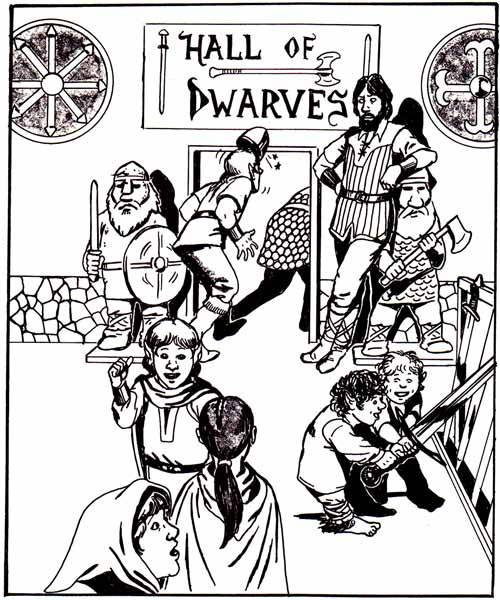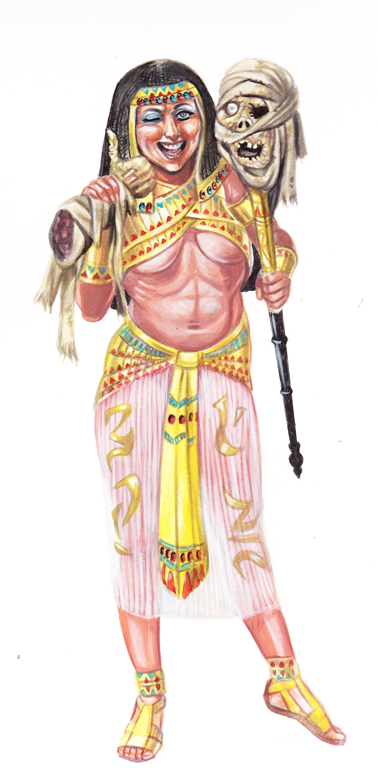I alluded to this yesterday, but I thought I should expand on why I have a bit of trouble with the "Planes as Planets" idea. First, I should say, I think this is fine for a certain sort of "magic is misunderstood science" pulp settings, and it would work wonderfully with a conception of planet something like the ancient idea of the crystal spheres because then the planets basically are planes. (GURPS Cabal by Kenneth Hite sort of takes this approach.)
True, the planes as typically presented are a bit abstract, and any many cases it might not be immediately apparent what adventurers should do with them. On the other hand, "planes as planets" runs the risk of too much mudanity. In a magical setting, I feel like the environments need to be sufficiently strange (and challenging!) to explain why you just don't have them exist on the main setting world (or beneath it).
I think science fiction might offer some suggestions. This can get tough, because adventurers don't usually go around equipped with the sort of gear space explorers have to deal with hostile environments (though it certainly could be available to them). This means sticking a bit more to pulpier sci-fi with more human-friendly environments for inspiration.
Here are two examples from the work of Stanley Weinbaum I think would work:
Weinbaum's Uranus from "Planet of Doubt" is permanently shrouded in green-gray mists (visibility only out to a few feet) and heated not by the too-distant sun, but by volcanism. There are strange, swirling beings (or what appear to be beings) of solidified mists with "the faces of gargoyles or devils, leering, grimacing, grinning in lunatic mirth or seeming to weep in mockery of sorrow. One couldn't see them clearly enough for anything but fleeting impressions—so vague and instantaneous that they had the qualities of an illusion or dream."
Those apparitions are not what they seem, but I won't spoil it for you--and of course, it doesn't really matter to your setting what Weinbaum did with them, anyway.
Then there are giant, tubular beasts resembling a larger, stranger version of the processionary caterpillars of Eath--or when they are forming a "train," Jason Sholtis's googlopede. They are a hazard that can't be defeated by brute force (probably, though multiple fireballs cure a lot of problems!), but rather have to be overcome strategically.
All you need is the addition of some treasure player's might want, and Weinbaum's Uranus is ready to be explored.
Weinbaum's Venus from "Parasite Planet" is even more interesting, though its shear hostility may make it less suitable. It's tidally locked, with a desert hot side and a frigid cold side, and a strip of more hospitable (relatively) twilight zone. That zone is a mostly jungle, hotter than anything on Earth, plagued by mud eruptions that make encampment tricky. It's teeming with life of an unsavory, but gameable, sort:
A thousand different species, but all the same in one respect; each of them was all appetite. In common with most Venusian beings, they had a multiplicity of both legs and mouths; in fact some of them were little more than blobs of skin split into dozens of hungry mouths, and crawling on a hundred spidery legs.
All life on Venus is more or less parasitic. Even the plants that draw their nourishment directly from soil and air have also the ability to absorb and digest—and, often enough, to trap—animal food. So fierce is the competition on that humid strip of land between the fire and the ice that one who has never seen it must fail even to imagine it.If that's not enough, the air cannot be safely breathed, except right after a rain, due to the risk of inhaling mold spores that will sprout in the lungs. Food or water left exposed for even a short period of time begins to growth fuzz.
Terrans brave Venus because of its bounty plant-derived substances for pharmaceuticals, predominantly an anti-aging drug. Similar "potion ingredients" might tempt adventures. Venus also as a very D&Dish creature:
...the doughpot is a nauseous creature. It's a mass of white, dough-like protoplasm, ranging in size from a single cell to perhaps twenty tons of mushy filth. It has no fixed form; in fact, it's merely a mass of de Proust cells—in effect, a disembodied, crawling, hungry cancer.
It has no organization and no intelligence, nor even any instinct save hunger. It moves in whatever direction food touches its surfaces; when it touches two edible substances, it quietly divides, with the larger portion invariably attacking the greater supply.
It's invulnerable to bullets; nothing less than the terrific blast of a flame-pistol will kill it, and then only if the blast destroys every individual cell. It travels over the ground absorbing everything, leaving bare black soil where the ubiquitous molds spring up at once—a noisome, nightmarish creature.Again, something that brute force might not be the best way of countering.
Those are just a couple of examples. Weinbaum's fiction is in the public domain at least in some countries, so visit the internet and read more about them.





















